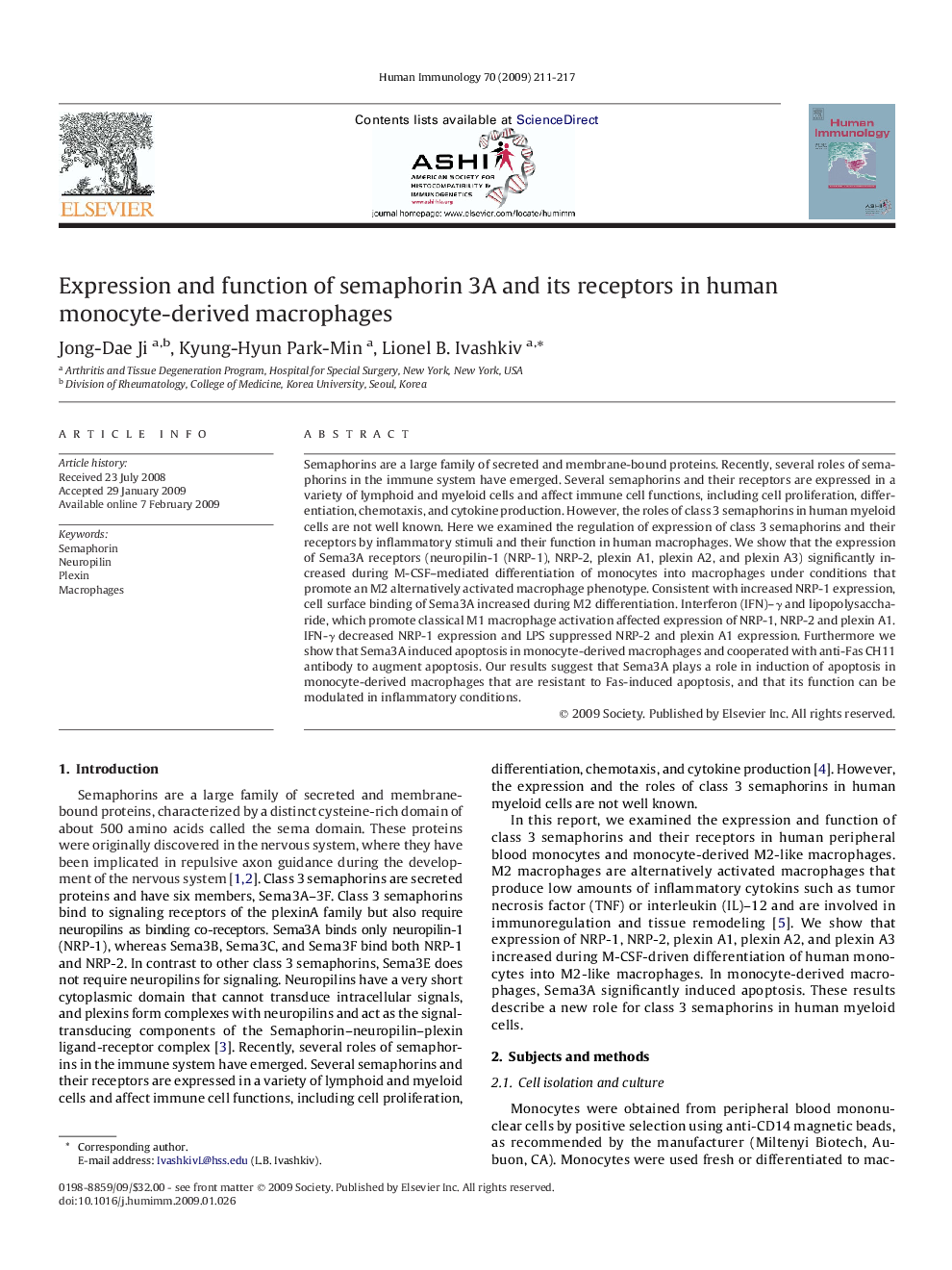| Article ID | Journal | Published Year | Pages | File Type |
|---|---|---|---|---|
| 3351397 | Human Immunology | 2009 | 7 Pages |
Semaphorins are a large family of secreted and membrane-bound proteins. Recently, several roles of semaphorins in the immune system have emerged. Several semaphorins and their receptors are expressed in a variety of lymphoid and myeloid cells and affect immune cell functions, including cell proliferation, differentiation, chemotaxis, and cytokine production. However, the roles of class 3 semaphorins in human myeloid cells are not well known. Here we examined the regulation of expression of class 3 semaphorins and their receptors by inflammatory stimuli and their function in human macrophages. We show that the expression of Sema3A receptors (neuropilin-1 (NRP-1), NRP-2, plexin A1, plexin A2, and plexin A3) significantly increased during M-CSF–mediated differentiation of monocytes into macrophages under conditions that promote an M2 alternatively activated macrophage phenotype. Consistent with increased NRP-1 expression, cell surface binding of Sema3A increased during M2 differentiation. Interferon (IFN)–γ and lipopolysaccharide, which promote classical M1 macrophage activation affected expression of NRP-1, NRP-2 and plexin A1. IFN-γ decreased NRP-1 expression and LPS suppressed NRP-2 and plexin A1 expression. Furthermore we show that Sema3A induced apoptosis in monocyte-derived macrophages and cooperated with anti-Fas CH11 antibody to augment apoptosis. Our results suggest that Sema3A plays a role in induction of apoptosis in monocyte-derived macrophages that are resistant to Fas-induced apoptosis, and that its function can be modulated in inflammatory conditions.
